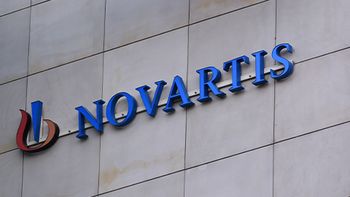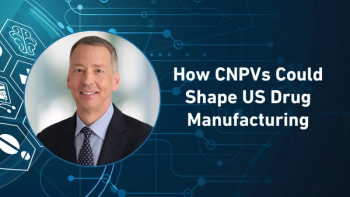
- Pharmaceutical Commerce - July/August 2010
Technology Transfer
How Contract Manufacturers Can Help Pharma Through The Era of Divestiture
Technology Transfer has been variously defined. The broadest definition traces the path all the way from scientific discovery to a useful product. Another definition describes it more narrowly as a process for bridging an R&D process to commercial production. In our business as a contract manufacturer, we define Technology Transfer as the transfer of a client’s product knowledge and manufacturing processes to our facilities using a rigorous process that assures flawless execution, efficient operation, and validated results.
BEST CASE:
The least problematic TT project is one where:
1. The expertise of the source site is cooperative and freely available
2. The full equipment train is up-to-date, in excellent condition, and transfers to the new location
3. All equipment comes with full documentation and PM records (in English).
4. No product, process, or packaging changes are coincident with the project.
5. All of the same raw materials suppliers will support the new location.
6. There is no change of product ownership as a result of the project.
7. There is no scale-up (or scale-down) of process size
8. Full product and process specifications are available
9. The receiving location has technical familiarity with the process
10. There is plenty of time and money.
WORST CASE: 1. Source expertise
The donor site is either not willing or not able to assist in the transfer. It is rarely the case that there is no cooperation, but it is often the case that the donor site is in the process of moving on to whatever the “next thing” is for them and they are more invested in their own future than in yours. This is both understandable and likely to occur. In mapping a TT process within this reality it becomes necessary to contractually arrange for a level of support that you can count on from the incumbent and to develop firm alternatives for the needed help that was determined to be unavailable. This can take the form of industry consultants, OEM machinery suppliers, raw material suppliers, or other available resources.
2. Equipment condition
There are many degrees of complication possible regarding the equipment that was previously used. We have encountered instances where the equipment was available, but it was at the end of its service life or was obsolete and no parts or support were available. Sometimes the need to validate the new production site before decommissioning the old site means that none of the equipment is available. The ramifications of any equipment change should be analyzed vs. its ability to impact the three deliverables in our definition.
3. Documentation
We have received equipment with no OEM documentation and with no maintenance records. We have received documentation in languages other than English. The lack of good documentation does not obviate the need for it. I recently found that prints, specifications, and an original set of technical manuals were available for a machine that was built in 1949. All that was needed to obtain them was the machine serial number and the payment of a reasonable fee.
4. Potential process changes
One would hope that by the definition of transfer that the “thing” you were transferring would not itself change. Of all the hoped-for constants, this is the one to fight the hardest for. And fight you will, but often in vain. Perhaps your best objective is to seek to minimize the changes in this regard. Obviously some graphics changes to packaging are easily accommodated. A little bit of re-size or a like-in-kind substitution of materials may prove non-problematic. If the changes get more significant than that, you have to realize that you may have made a fundamental departure from the original objective of transferring the “thing” to reinventing it. All is not lost at this point, but the game just got deadly serious. You have gone from the horizontal process of TT (moving a “thing” from place to place) to the vertical process of TT (moving a “thing” along the development path from invention to market). Sometimes this radical departure means the need to involve different groups of technologists and scientists to assure that the vertical change in product is successfully executed simultaneous with the horizontal change from producer A to producer B. Underestimating the pitfalls that arise from this has doomed many a TT project.
5. Raw material supplies
Some products and processes are very robust to changes in material suppliers or specifications. Other processes have such a narrow process window that materials from the same supplier can yield different results from lot to lot. It is important to know which kind of process you are transferring and which, if any, of the materials are the most impactful to results. If the source site has done a good job of process validation, you can learn much about the character and stability of the process. You should make every effort to acquire this documentation prior to planning you project. If a good job was not done, or if the information is not available, it will be necessary to do engineering trials to determine whether the planned materials can be expected to function equivalently to the materials that were previously used. The fact that both are “in-spec” is too weak a nail to hang your hat on.
6. Product ownership
Sometimes it is the change of product ownership that leads to the opportunity to relocate the product or process. While that is not necessarily a complication, it most certainly can be. Different companies have different general SOP’s, requirements, and expectations. A process that ran day and night for years at Company A may prove to be dead in the water for Company B because of higher process control expectations. Spec ranges can get tightened to the new company’s “standard” and process excursions that were overlooked at the source site can become signals to shut down the operation and start an investigation. Specifications, test methods, validation protocols, approved suppliers, and machinery standards can all change with the transfer of the product to a new company. If a company change is part of the project scope, it is vitally important to work through this list of potential impacts to make sure that there is full understanding. Company A, having lived in its own environment might never suspect that a company would dare to operate in any other manner. It is incumbent upon the manager of the TT process to anticipate, evaluate, and negotiate the differences between the two company’s modes of operation so that surprises and roadblocks are prevented.
7. Production scale-up or scale-down
Scale-up and scale-down are additional potential complications that invoke the transition from horizontal to vertical Technology Transfer. The same considerations apply. Make sure the project team is properly staffed for this element of scope. Do the proper proofs in advance.
8. Product and process specifications
We sometimes tell potential clients that as a full-service contract manufacturer, all they need to do business with us is a purchase order and a specification. You would be surprised how often we get neither, at least at the start of the project! Very often requirements tighten and change as more and more of the client’s staff weigh in on the issues.
This results in a moving target. A marksman will tell you that the key to hitting a moving target is to anticipate its position. The same tactic works here and the better you know the client the better your odds. The management writer Steven Covey used to urge his readers “to begin with the end in mind”. If you can guide your client in this direction you will have an easier shot to make.
9. Technical expertise
Some contract manufacturers have an established field of practice and they don’t stray from it. This increases their chances of success but limits their usefulness. It is understandable that one would be best at what they already do, but even in a limited field of practice, progress in products and materials can make standing still impossible. Our firm seeks out the relocation of proprietary processes and the development of new process expertise because we have confidence in the processes we use to first understand and then transfer a technology. It is only hazardous when done improperly.
10. Time & money
With enough time and money, almost anything can be accomplished. But when is there ever enough time and money? Budgets are always tightly constrained. Unexpected expenses arise much more often than unexpected savings or additional funds. Eliminating the unexpected means challenging the project at a detailed level. It also means determining the cost after the scope and not the other way around. Time and money can be traded back and forth to a limited degree.
Old drag racers used to say: “speed costs money, how fast would you like to go?” The TT Manager can ask the same question. If he does, he is usually countered by the old executive who says, “When given a choice, take both.” Since there is no resolution to this dilemma, the important concept is to agree in advance what the scope, the resources, and the schedule are. If your aim is to be great instead of good, count on having less time and money than were originally agreed to. TT projects are almost invariably rushed to completion. It is not uncommon for the source site to become unreliable at the end as they lose the critical mass of expertise and equipment. It pays to count on an accelerated end date from the time the project is planned. The best time to “hurry up” is at the beginning of the project, not the end.
As you toss in more and more difficulties like the ten described above, the desired outcome becomes less and less credible. Eventually, you can only hope for a good outcome. But as they say in politics, hope is not a strategy. The strategy that works for Pharma Tech is the simple strategy of list management. We make a list of things we know. We make a list of things we don’t know. We even have a list of lists. Since we use a uniform TT process, any member of the team could lead a planning session, or in fact, manage a project. They will always begin with the end in mind. “What constitutes success? What are the deliverables? What is important to the client? What are they afraid of?”
Answers to these questions peg the end point. Detailed planning is centered on anticipating what may happen at each stage and what can be done about it. What challenges exist? What resources are available? Finally what evolves is a project schedule which is in the form of a list of activities with assignments and due dates. Sometimes the responsibilities lie with the client firm and we will have to manage them in order to deliver. This can be a delicate balance of politics and pragmatism but it is an important driver for success.
A dentist’s office once had a sign that read “There is nothing the dentist can do to make up for what the patient won’t do.” The same is true of managing a client’s project. They have responsibilities and due dates to deliver as well. It is our job to help them help us meet the project milestones. The last milestone is always the celebration of project success with our workforce. PC
ABOUT THE AUTHOR
Lee A. Dickinson is Vice President and General Manager at Pharma Tech Industries (Royston, GA; 706 246 3555; www.Pharma-Tech.com).
Articles in this issue
almost 12 years ago
Industry group Rx-360 lays plans for expanding activities in Chinaabout 12 years ago
Eagle Productivity opens new training center in Spainabout 12 years ago
Pharma distribution channels crank up for flu seasonover 12 years ago
testover 12 years ago
Physician's sample closet unites branded, generic and OTC productsNewsletter
Stay ahead in the life sciences industry with Pharmaceutical Commerce, the latest news, trends, and strategies in drug distribution, commercialization, and market access.





